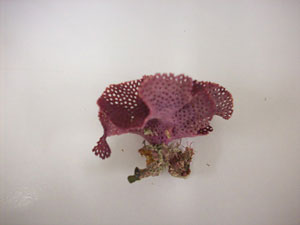

 | |||||||||||
|
|
Journals 2008/2009Zamaria Rocio
September 2, 2008 Phil Bock is now retired but is a scientific associate at the Museum Victoria. He is the expert on bryozoans. To tell you the truth I did not know anything about these creatures. Because of him, I fell in love with them and understood them a lot better. He explained the different kinds found in this area. Many of the bryozoans he got were from the rubble that once was the coral head I worked up earlier in the day. He would allow a piece of rubble to dry out so he could mark the area surrounding the bryozoan with water colored with food dye. By doing this, he could see better the area the bryozoan covered.
In the phylum Bryozoa, there are the bryozoans and the sea mosses. The bryozoan is made up of many tiny animals (zooids) living in colonies. There is hard brittle outer layer that when you look at it under a microscope it looks like a honeycomb made up of small ovals with very tiny round doors. Underneath this is their soft bodies are joined together.
Phil was the most helpful person at the field station. He did chores, made coffee for everyone, and looked after others, all this without ever complaining. I myself considered him my mentor while I was on Heron Island. Whenever I had a question, I would go to him for the answer. He also helped me set up my computer for teleconferencing with schools back home. In fact, whenever I could not figure out how to do something on my computer I would just ask him and within minutes he had the solution. He had that special gift of how to make a complicated topic understandable. He was a very knowledgeable on many topics, which probably came from his truly unique upbringing. He was born in Fiji where his parents were missionaries. His father was made an honorary chief, which was later bestowed upon him too. I was fortunate to of spent time with him in the laboratory and out in the field. He was a valuable asset to this research team and to me. |
||||||||||

